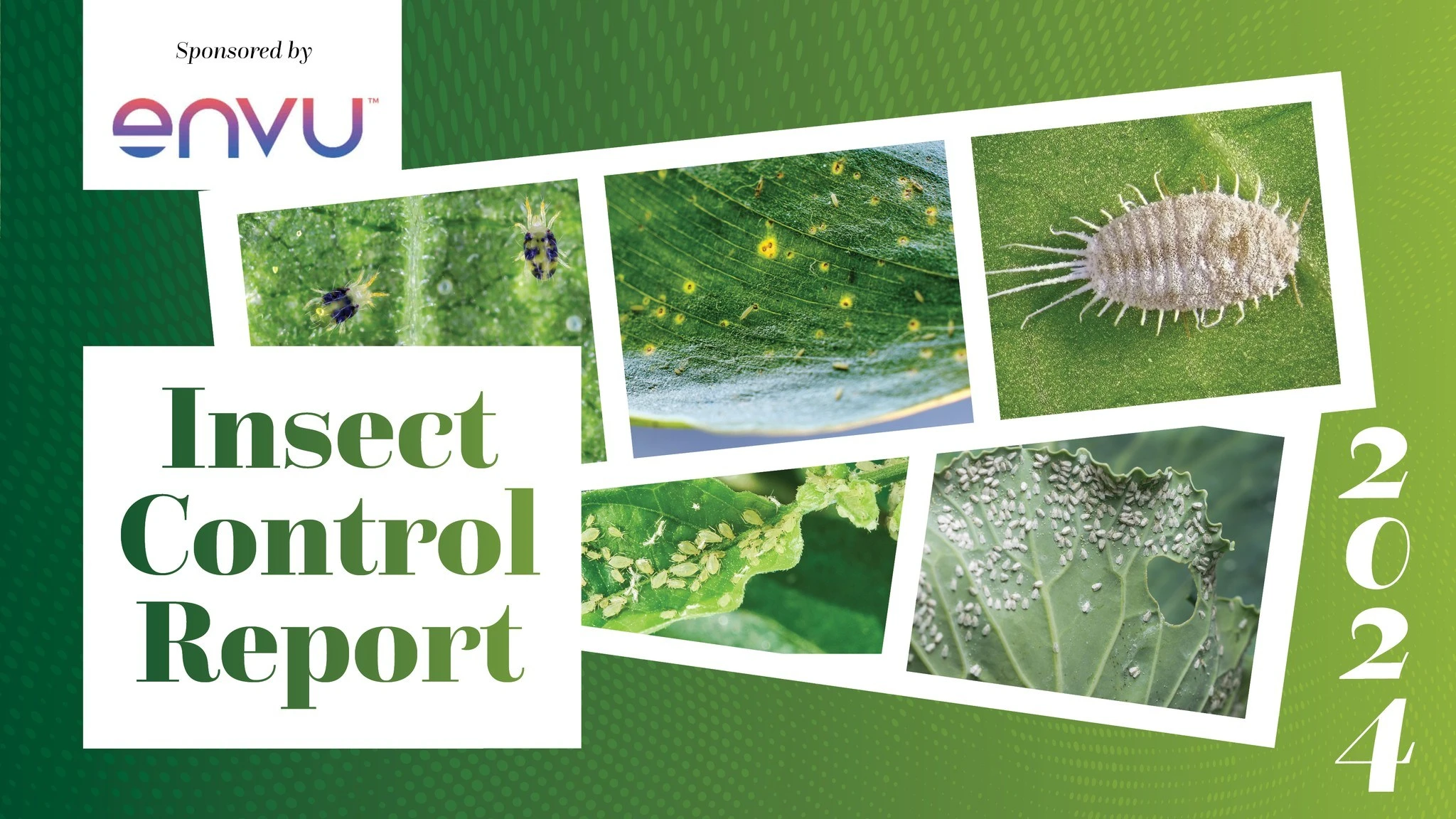|
 Botrytis cinerea is a fungus that causes diseases on greenhouse ornamentals including leaf spots, blighting, stem cankers and damping-off of young seedlings. Blighting is the most common symptom and affects leaves, petioles, blossoms and stems. Botrytis cinerea is a fungus that causes diseases on greenhouse ornamentals including leaf spots, blighting, stem cankers and damping-off of young seedlings. Blighting is the most common symptom and affects leaves, petioles, blossoms and stems.
Botrytis produces large masses of gray conidia or spores (hence the common name gray mold) that are carried on air currents to healthy plants where blight can become established. On bedding and stock plants, Botrytis typically becomes established and produces conidia on older lower leaves that are near the moist surface of the growing medium and under the plant canopy.
Botrytis also readily infects the broken or cut stem surface of stock plants and progresses downward, causing a dieback of the entire stem. This diseased tissue offers a good source of nutrients that are used to produce abundant amounts of conidia.
Production practices
When the weather is moist and humid, susceptible plants such as geraniums may need to be protected from Botrytis infection. Monitoring the lower leaves for early signs of brown/gray fuzziness can signal the need for implementing control measures.
While fungicides alone cannot control Botrytis blight, they are often necessary partners in a successful disease management program that includes environmental control and sanitation. Even the best fungicides won’t provide the needed control if the relative humidity is high and exceeds 85 percent and the leaves stay wet for six hours or more in a 24-hour period.
Plants may also be susceptible if they become wet from water dripping from overhead, dew or condensation. This moisture allows the Botrytis conidia to germinate and penetrate the plant.
Watering in the morning so that the foliage can dry rapidly is one way to minimize Botrytis. Practices that reduce the relative humidity are also helpful and include spacing plants further apart and providing good air circulation. Reduce the relative humidity for a minimum of 24 hours immediately following the harvesting of cuttings to help “dry” the wounded stems to limit stem blight.
Sanitation
Sanitation should not be overlooked in managing disease. Botrytis readily colonizes and produces conidia in drying or dead plant parts. If the plant debris that collects on and underneath benches is removed then there is no food reservoir for Botrytis to produce conidia that can infect nearby healthy plants.
|
Chemical controls
Michigan State University tests products for control of Botrytis blight yearly. Geraniums are good test plants because they seem to be a “magnet” for this disease. Botrytis can limit all phases of geranium production.
During testing all fungicides are applied to the plants and allowed to dry prior to introducing Botrytis conidia. Each time a test is conducted, fungicides that are considered to be especially effective are included for a comparison. Over many years of testing fungicides for Botrytis control, I consider Decree and fungicides containing chlorothalonil (i.e., Daconil) to be the standards because they consistently provide effective control. We were interested in comparing the standards Daconil Weather Stik 6SC and Decree 50WG with other registered products and also included new and unregistered products (see graph).
Test results
Botrytis became well established on the geraniums that were not treated with fungicide and many leaves exhibited the fuzzy conidia of the fungus. All plants that were treated with one of the test fungicides had fewer leaves with Botrytis gray mold than plants that did not receive any treatment.
 Botrytis produces large masses of gray conidia or spores, hence the common name gray mold. Botrytis produces large masses of gray conidia or spores, hence the common name gray mold.
The products that had the fewest infected leaves included Fluazinam 500F, Palladium 62.5WDG, Daconil Weather Stik 6SC, Veranda O 11.3 WDG and Pageant 38WG. Veranda O 11.3 WDG and Pageant 38 WG are new fungicides that are registered for use. In this trial, geraniums treated with the standard product Daconil Weather Stik 6SC had fewer infected leaves than plants treated with Decree 50WG. Decree 50WG and the experimental V-10135 4SC were slightly less effective than many of the products tested but they were better than the Disarm O 480SC and OHP 6672 treatments.
Identifying new fungicides that could be registered for use on ornamentals has been a major thrust of the research sponsored by the Special Floriculture Initiative of the USDA Agricultural Research Service and the American Floral Endowment. With data from screening trials, university researchers can partner with product manufacturers, interested growers and the IR-4 Project (www.ir4.rutgers.edu) to initiate and speed registration. Input from growers regarding their need for pest management tools is encouraged and appreciated and can be made via the IR-4 Web site.
Mary Hausbeck is professor at Michigan State University, Department of Plant Pathology, www.plantpathology.msu.edu.
|

 Botrytis cinerea is a fungus that causes diseases on greenhouse ornamentals including leaf spots, blighting, stem cankers and damping-off of young seedlings. Blighting is the most common symptom and affects leaves, petioles, blossoms and stems.
Botrytis cinerea is a fungus that causes diseases on greenhouse ornamentals including leaf spots, blighting, stem cankers and damping-off of young seedlings. Blighting is the most common symptom and affects leaves, petioles, blossoms and stems.





